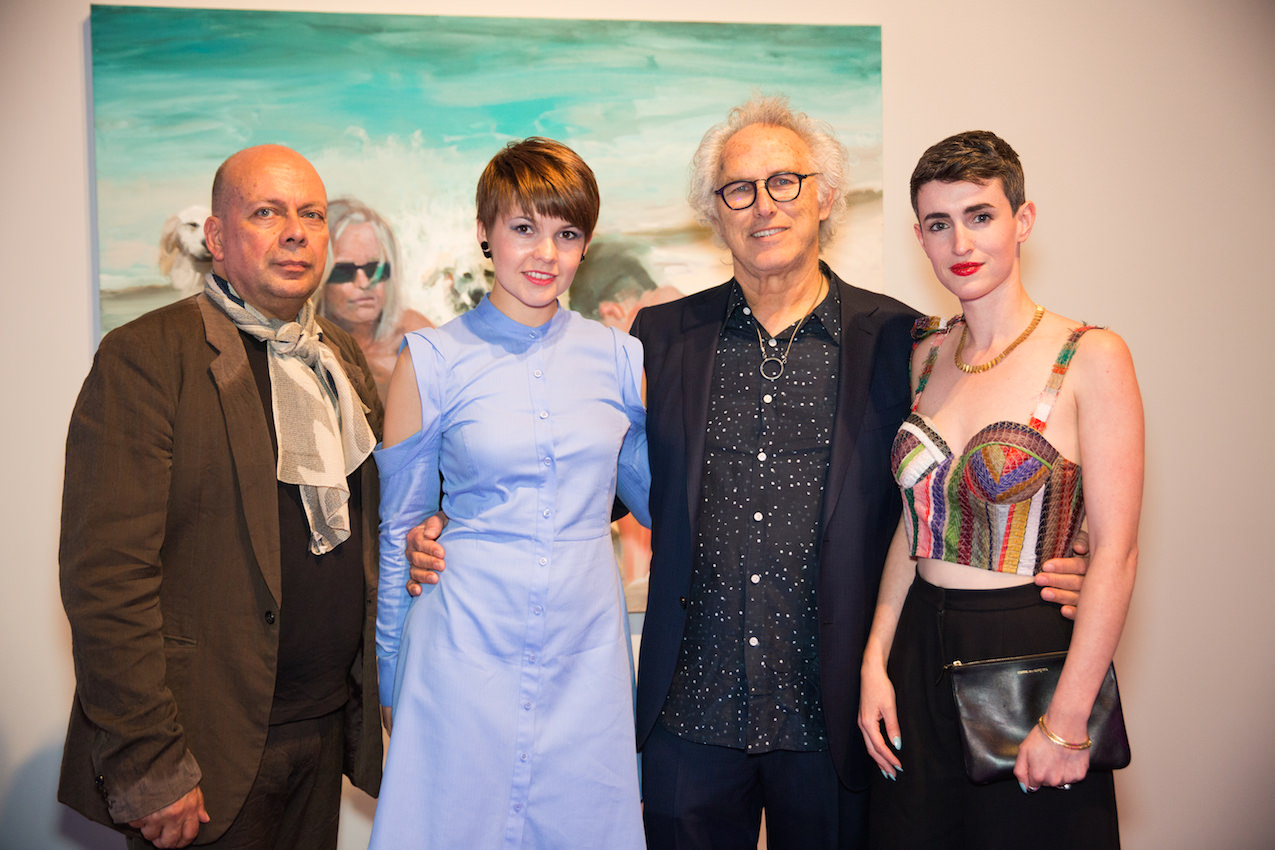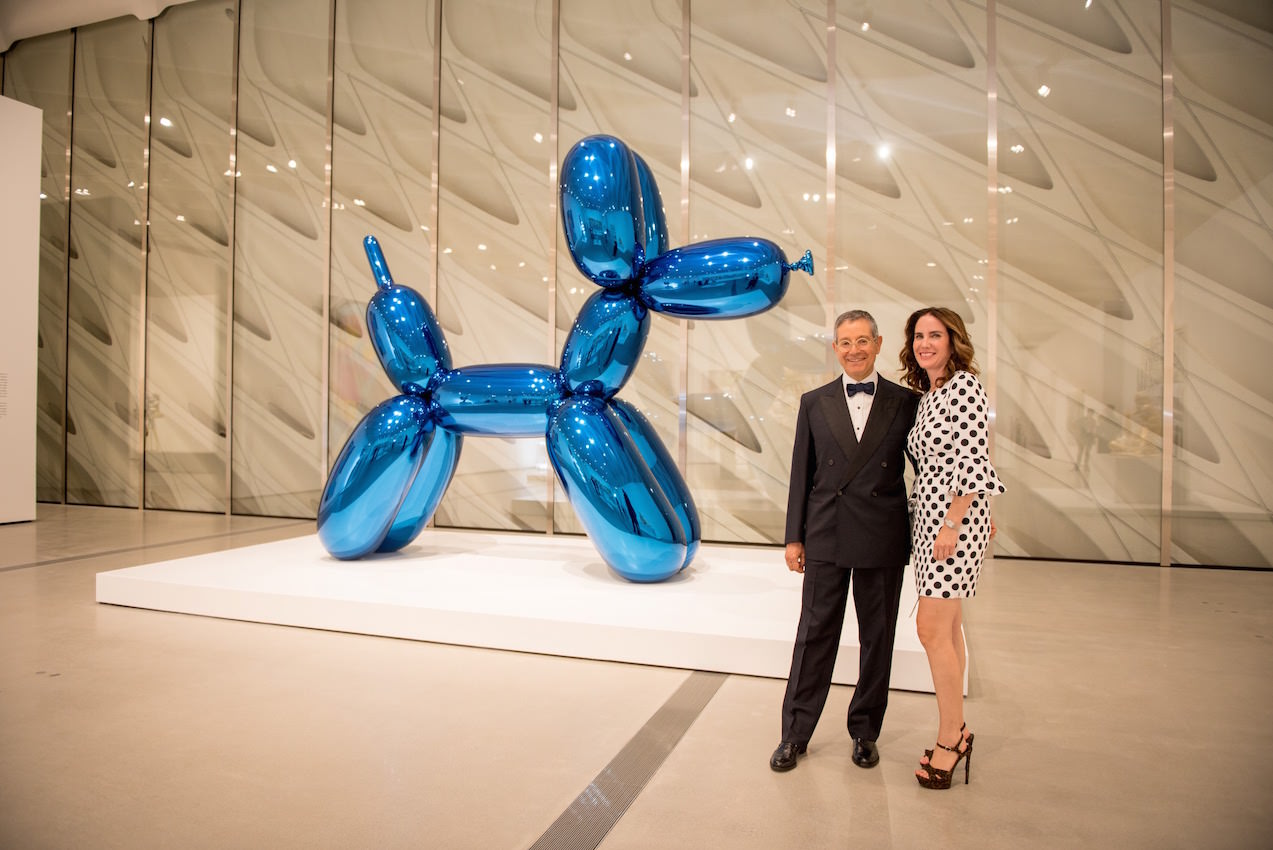The American artist Eric Fischl made his first artwork around seven years old, cramming peanut butter into a Statue of Liberty figure. He verified it’s place in the art world by acknowledging his conscious intentions of creating it, the unconscious interpretations that came after, and an overall sense of brilliant irrationality that it encompassed. He was hooked.
Now, he’s recognized as an artist that communicates American life—specifically suburbia living. Over the years, his naturalistic paintings, sculptures, and prints have garnered acclaim for their honest peek into suburban life, shining light on the uphills and pitfalls of life outside the city, with a voyeuristic touch.
Psychological and sexual intensity floors the canvas, as Fischl communicates underlying messages of alcoholism, patriotism, and patriarchy. All the while, as he works from Sag Harbor alongside his wife, the painter April Gornik, the theme of Fischl’s art hasn’t changed. It has evolved to include more meaning, more transparency.
Today, in isolation like the rest of us, he’s working on a set of new paintings—like Late America 2 and Like Explaining the End of the World to a Dog—to continue his satirical look at life outside the city. And with museums and galleries still closed, his latest work American Hula at Skarstedt Gallery can be seen in its online viewing room through tomorrow.
Whitewall spoke with Fischl to hear how he’s handling isolation amid the pandemic, how he’s communicating our comic-tragic lives through brushstrokes, and what’s bothering him about negativity in the air today.
WHITEWALL: Eric, your work is recognizable around the world, but your early beginnings as an artist (prior to even graduating from the California Institute of Arts and becoming a teacher at the Nova Scotia College of Art and Design) aren’t as well known. Do you remember the first piece you ever made?
ERIC FISCHL: The first piece of art I ever made was when I was seven or eight years old. I spontaneously stuffed peanut butter up inside of a Statue of Liberty tourist tchotchke I got on a field trip to New York City. What makes it art is that it was an authentically spontaneous act full of conscious intentions and unconscious interpretive meanings articulated in a physical form that captured its own exquisite irrationality.
WW: Did you have an “aha” moment, when you realized you wanted to pursue art as a profession?
EF: I did not have any desire to be an artist (or anything else for that matter) until I was 20 years old. I started taking some art classes at a community college so I could meet girls. I found more. While I was making my little class projects, I found two things I didn’t know I was looking for.
It was the first time in my life I able to concentrate and it was the first time in my life I wasn’t afraid to be alone. Being creative and the struggle to make something into work of art made me feel enlivened, focused and integrated. I knew at that moment that even if I was shitty at it making art was all I wanted to do.
WW: Over the years, your multi-disciplinary practice has focused on the topic of American suburbia life, connecting a collective consciousness. How has it taken shape in recent years in reaction to the times in which we’re living in?
EF: I paint what I know to learn how I feel about it. What I love about the suburbs is that is neither heaven nor hell. It is both in shorter intervals. And because it is wicked and damning, it can also be aspirational in its belief in goodness.
It is rich and fertile field full of compelling images of our comic-tragic lives. What more could an artist want? What’s changed for me is not the disappointments or frustrations of people asking too little of themselves, it is that I no longer separate myself through blame but now see it as the existential condition that encompasses all our lives.
WW: How are you doing amid COVID-19? How are you spending your time in isolation? Are you able to make work?
EF: When I’m in my studio everything feels familiar, normal, productive and in control. When I’m eating dinner with my wife, April, and watching the Great British Baking Show everything feels as it should be. Life is good. Life is amusing. Life looks delicious.
When I leave the house, put on the mask and gloves, make sure I’ve got sanitizer, and am mentally mapping my route to get groceries curbside. Everything becomes anxious and fearful. This is the truth of our reality at this moment. I know it is not just me. The importance for me is to stay within the moment, keep track of it, see what it looks like to have my world, our world, change so dramatically and so quickly.
I keep wondering what are images that will last, that will be able to capture the complexity of this moment? Have they revealed themselves to us already? Will it be the masks? Will it be the bravery and fatigue of the first responders? Is it the hospital tents in Central Park? Or is it the starburst of white on the tops of women’s heads no longer able to get to the beauty salon?
WW: Tell us a bit about American Hula—your piece in Skarstedt’s online viewing room, on view through tomorrow. It was inspired by Francisco Goya’s The Colossus, painted by the early 1800s and housed in the Museo del Prado.
EF: American Hula is a painting with a heavy sound—slow-rolling thunder. The image is that of a naked woman, seen walking from behind, swirling a hula hoop slowly around her muscular body. She walks with determination into the landscape ahead of you, and unaware of you. She is a force. She is a giant. She is nature on the move.
WW: Is there a political, environmental, familial, or societal topic that you’re puzzled by that’s impacting the work you’re making today?
EF: It angers me that there is so much negative energy that has become constant and insistent and making it more and more difficult to keep out of my thoughts, my dreams and worse, my studio. What we are seeing in America is that we are not a brave people. We are frightened and our fears have gotten the better of us. We are a parody of our fundamental values.
The Idiot President feeds us his boasting bullshit in angry tones that have no more substance than the theatrics. Everything he does or how it gets covered is made to feel urgent, enormous and impending. Strangely, it all makes me feel weightless and barely tethered. Our Grand Idiot is not the problem though he is the symbol of it.
Attacking him does not solve anything or even present a healthy alternative. It only feeds the monster. I take it as my job, my sacred purpose, to keep trying to make images that create compelling experiences which will open up the viewer to a vulnerability they discover we share. We have to find a way to reconnect and it has to come thru empathy.
WW: Tell us a bit about what you’re working on now. Any new themes or ideas you’re aiming to express?
EF: There are no “new” themes, only subtler variations on those themes that are at the core of one’s life. The process of making art for an entire creative lifetime is not about change. It is about evolution. It is about finding ways to keep a flow going; keeping the hunt and the promise of discovery alive. For me, the value of my life’s work will be how well I marked my path, not so I can get back but so others can follow.







